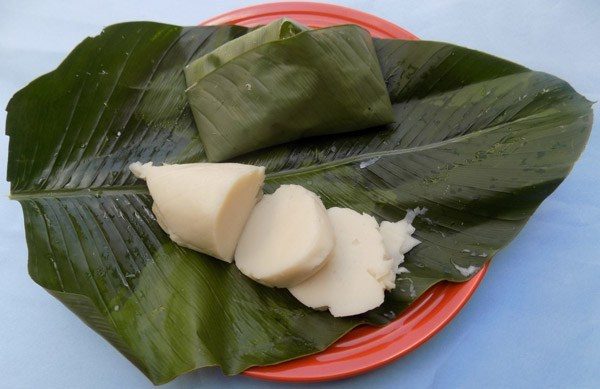Food is a universal necessity. It plays a central role in establishing family, professional, and communal bonds. Beyond merely nourishing the body, what we eat and with whom we eat can inspire and strengthen the bonds between individuals and communities. The art of cooking is inseparable from our own personal stories, our memories and associations. The ability to create simple traditional dishes from limited ingredients is one of the reasons why cooking is an art. Simple meals are usually original, delicious; it usually entails the smart usage of resources (often limited ingredients) to produce scrumptious meals.
On our history segment today is eko. Eko is a typical Yoruba street food that has become a well-loved Nigerian delicacy. It is a light meal that is rich in carbohydrate. It can be eaten at any time of the day. Among the Igbo, it is known as agidi. It is a solid version of the Nigerian pap which is called akamu in Ibo; ogi in Yoruba.
Eko is made from fermented maize flour. It is prepared just like pap, with just a little difference in cooking time. The pap is allowed to cook for a longer time until it thickens. The thickened pap is then wrapped and allowed to cool. It comes out as a solid soft jelly. Eko is a classic example of cold pudding. It can be enjoyed by adults and children alike.
There are two types of Eko, the plain white and the jollof. White/plain Eko is to eko jollof what white rice is to jollof rice. Here are three major differences between the two. While the white is simply the solid version of pap, the jollof is solid pap that is steamed in tomato and pepper base. Again, the jollof can be enjoyed on its own but the plain white is usually served with accompaniments like moi moi, akara, tomato stew, and pepper soup. It can also be served with a variety of soups like efo riro, okro or ogbono soup. And while biscuit bone is an essential ingredient in eko jollof (so important is this bone that a song was dedicated to it), the white does not have any bone in it.
Plain eko is usually recommended for invalids and convalescents. Those who are watching their weight use white eko as a substitute for eba or fufu. The white is also recommended as a starter food for babies; the thickened pap is enriched with milk or fruit puree before it is transferred to a mould or container to set.
Finally, eko is usually wrapped with uma leaves. However, in the absence of uma leaves, any clean container can be used.
References
Mummy’s Yum
Nigerian Food TV
Featured image source: InfoGuideNigeria.Com


